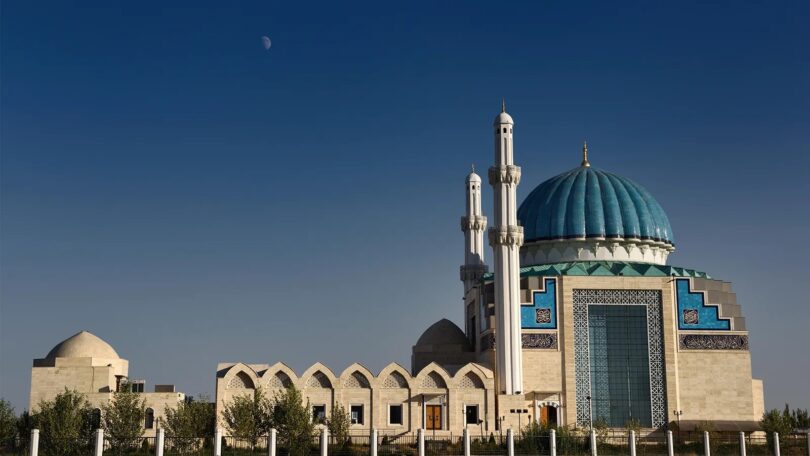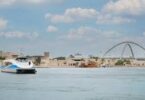Nylah Lee
Pressed against the borders of Uzbekistan and Kyrgyzstan, the southern Kazakh city of Turkistan (or Turkestan) is an ancient archaeological gem perched on the Eurasian Steppe. Fragments of Kazakhstani history are obscured within grand minarets and beneath sandy ruins. The mausoleums of 12th-century Sufi mystics soar into the sky, and colourful bazaars spread acres wide, dotting the rich downtown core with Kazakh art and cuisine.
Literally meaning “land of the Turks”, Turkistan was first settled as early as the 6th Century by former Turkic nomads who used it as a caravan stop along the Silk Road. The city once known as Shavgar and Yasī claimed its modern title in the 16th century, when it became the capital of the Kazakh Khanate until its Russian conquest in 1864. Today’s Turkistan is comprised of various groups of Turkic descendants, from Kazakhs to Uzbeks, which are bonded by an Islamic history so strong that the Cooperation Council of Turkic-Speaking States considers it the spiritual capital of the Turkic world.
Daulet Meldekhanov has spent the past seven years as a guide for Silk Road tour operator Advantour, leading customised guided tours designed to immerse travellers in Turkistan’s history and culture.
“Turkistan is such a unique city,” Meldekhanov said. “According to archaeological excavation, we [now believe] that there are more than 2,000 years of Turkistan.”
Here, Meldekhanov reveals five places you must visit to better understand the city’s art, cuisine, entertainment, architecture and culture.
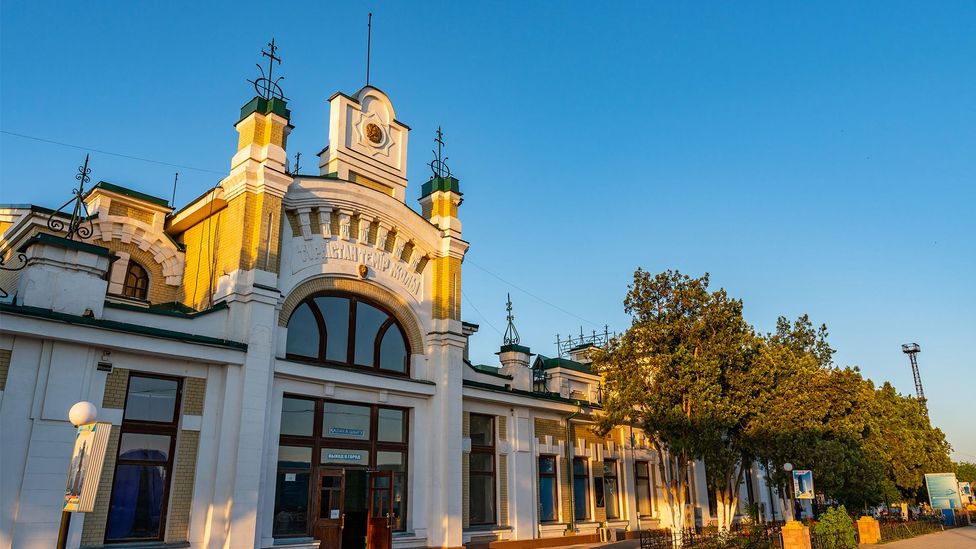
Guests are welcome to catch a scenic ride throughout Turkistan (Credit: AlexelA/Alamy)
1. Best way to travel: Turkistan Station
The Turkistan Railway Station is a captivating site, known for its uniquely rounded archway and eye-catching mint-coloured accent walls. It was influenced by 20th-century Soviet constructivist architecture integrated with Kazakh tile, and connects to the southern stretch of the Orenburg-Tashkent Railroad, the piece of the vast Russian Trans-Caspian Railway network that traces the path of the Silk Road deep into Central Asia.
According to Meldekhanov, Turkistani Railways are some of the most authentic examples of Russian architecture combined with that of Kazakhstan, and visitors can catch a scenic ride throughout Turkistan and the surrounding cities of Kazakhstan.
Address: Tauke khan street, 2A
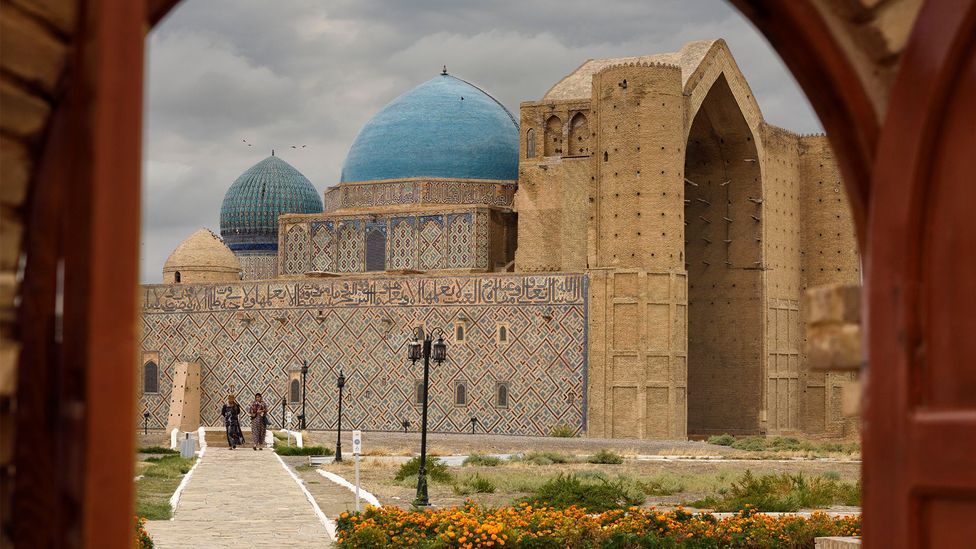
The Mausoleum of Khoja Ahmed Yasawi is an architectural marvel (Credit: Education Images/Getty Images)
2. Best Silk Road artefact: The Mausoleum of Khoja Ahmed Yasawi
Located within the Azret Sultan Museum, the Mausoleum of Khoja Ahmed Yasawi is an architectural marvel that was built between 1389 and 1404 and remains unfinished. It was constructed for and subsequently named after Khoja Ahmed Yasawi. This renowned poet, philosopher and mystic helped spread the Sufi branch of Islam throughout the Turkic-speaking world. Following Yasawi’s death in 1166, his resting placed served as sacred ground for Sufi Silk Road travellers.
“Here, we can admire more than 600 years of Muslim heritage,” Meldekhanov said. “We can see the original fragments of the walls and even some original decorations from [the] 14th Century.”
Inscribed on the Unesco World Heritage list, the tiled mausoleum towers 38.7m high and is capped with a turquoise dome that’s the largest in Central Asia. Considered one of the best-preserved architectural feats from the Timurid Empire that ruled the area in the 14th Century, the 35-room mausoleum holds ancient Persian paintings, a carpeted mosque and intricate stonework mirroring that of the monument’s exterior. The structure was built near the conclusion of the Silk Road era, etching its 1,500-year architectural influence into its colourful mosaic tile.
“While much of the Silk Road has faded into history, the Khoja Ahmed Yasawi mausoleum stands as a main testament to its past glory,” said Murod Nazarov, Meldekhanov’s colleague at Advantours.
Address: Aiteke bi 1B
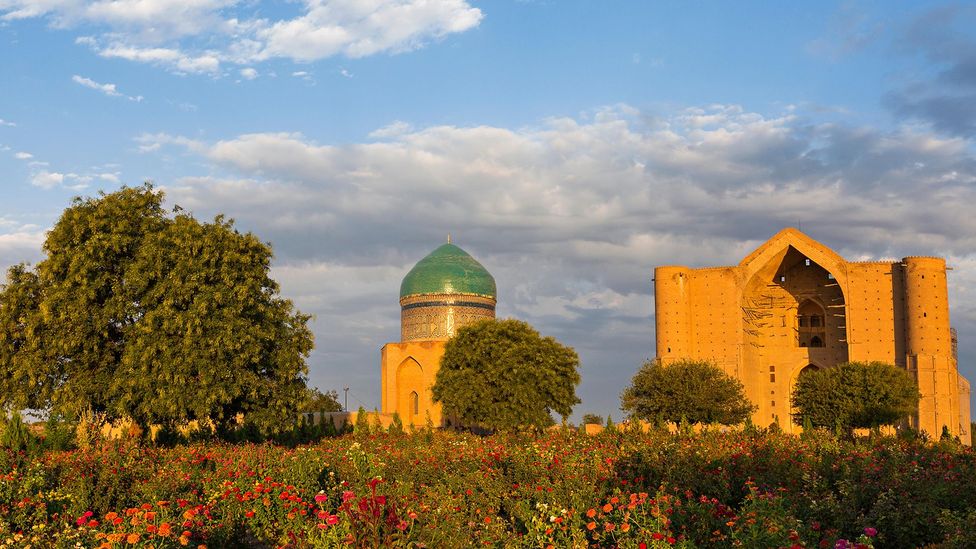
This mosque remains an important destination for Sufi pilgrims (Credit: MehmetO/Alamy)
3. Best historic tour: The Azret Sultan Museum
If the Mausoleum of Khoja Ahmed Yasawi has history buffs itching for more, the surrounding Azret Sultan Reserve-Museum won’t disappoint. Stretching a staggering 1,235 acres and featuring a dizzying array of written, architectural and cultural artefacts, the museum was designed to help popularise the national history of Kazakhstan. Given its size, it may take several trips to see the collection’s full breadth, but Meldekhanov recommends a few places to start.
Beneath the Mausoleum of Khoja Ahmed Yasawi lies the Hilvet, Yasawi’s hand-dug, semi-underground mosque that would become a cradle for Sufism. Yasawi’s private room – illuminated by streams of sunlight that penetrate its 4m depth – was meticulously crafted to sustain his secluded prayer routine. Unesco has dubbed the mosque a “second Mecca”, as it remains an important destination for Sufi pilgrims and is an awe-inspiring example of Kazakh architecture.
Another of the museum’s gems is its bathhouses. Eighty metres from the mausoleum and mosque, visitors can enter the brick walls of the east bathhouse that dates to 1580-1590. Until as recently as 1979, the structure was a functioning hot-water bath system where visitors could cleanse before reaching the central mausoleum. Although water no longer runs through it, the bathhouse still stands as an exhibit in the museum.
Meldekhanov also recommends admiring the walls of the Chillakhana, a dome-shaped brick structure that once held sacred rituals and can only be accessed with a local guide. The Mausoleum of Rabiya Sultan Begim, specially built for descendants of Turkic conqueror Timurlane, is another World Heritage site that Meldekhanov believes is worth a stop.
Website: http://azretsultan.kz/eng/pravila-povedeniya-v-muzee-aziret-sultan/
Address: Aiteke bi 1B
Phone number: +7 72533 3 23 00
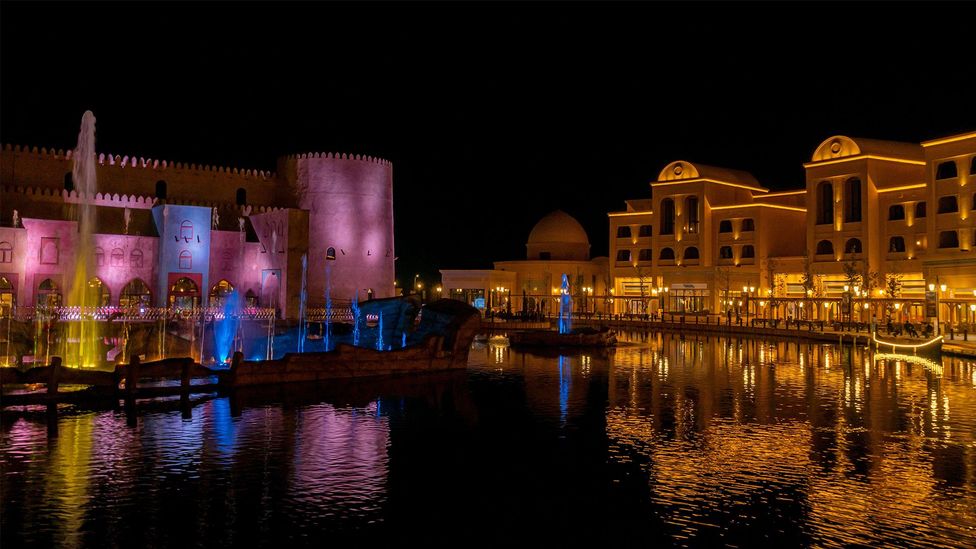
Karavansaray complex offers much more than moonlit gondola tours (Credit: ruelleruelle/Alamy)
4. Best entertainment experience: The Karavansaray Complex
While sometimes called the “Kazakh Venice” by locals for its romantic canal, the city’s Karavansaray complex offers much more than moonlit gondola tours.
Located on Bekzat Sattarkhanov Avenue, a strip named for the late Kazakh Olympic boxer, Karavansaray is a five-star hotel, an epicentre of cultural pride and hospitality and a world of Turkistani entertainment all in one. With a variety of shows and entertainment packages available, Meldekhanov urges guests to stay for the night-time boat parade re-enacting the tragic saga of Kyz-Zhibek and Tolgen, a story that he says is the Kazakh equivalent of Romeo and Juliet.
“We also have a very interesting show programme in the Karavansary complex, which is the Flying Theatre,” said Meldekhanov. “[During this show], you are [like a] phoenix bird flying above Kazakhstan like a rocket. The show has eight dimensions, so without any glasses, you can see, you can, feel, smell and breathe in everything.”
This show takes place inside Samruk Flying Theatre, a massive, golden egg-shaped building perched atop a “nest”. The performance immerses guests in a multidimensional journey through several eras of Kazakh history, including a simulated trip through the Silk Road.
Children are also welcome to join in the Karavansaray by taking a pony ride, navigating the rope course and catching air in the trampoline park.
Website: https://www.karavansaray.com/en/
Address: B. Sattarkhanov Avenue, Building 14
Phone number: 7-725-33-53-000
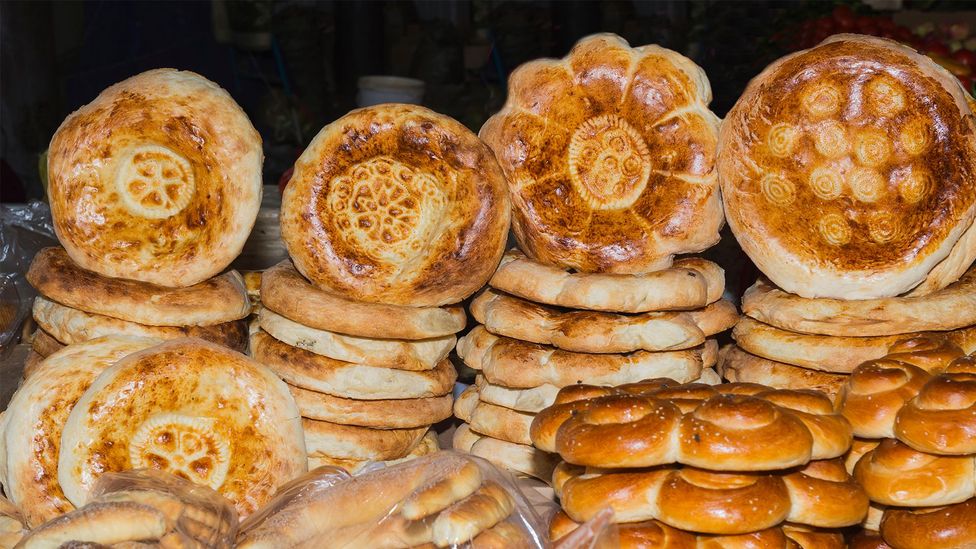
This open-air market offers a wealth of Kazakh art and food (Credit: imageBROKER.com GmbH & Co. KG/Alamy)
5. Best for Kazakh cuisine: Kuanysh Bazaar
Whether it’s for a refreshing drink, a satisfying meal or an ornate souvenir, Meldekhanov encourages travellers to stop at one of Turkistan’s many bazaars. “You can find a wide variety of food, fresh fruits, vegetables, outfits and much more” at each of these markets, Meldekhanov said, but he recommends starting at Kuanysh Bazaar.
Just a 10 minute drive from the Mausoleum of Khoja Ahmed Yasawi, this open-air market offers a wealth of Kazakh art and food. Masterfully embroidered textiles and unique pottery line the booths of local vendors, and the mouth-watering aromas of stews and roasts fill the air, reflecting the Kazakh affinity for meat.
“We joke that [Kazakhstan] takes second place for [meat consumption], and everybody asks who is the first,” said Meldekhanov. “It’s the wolf!”
Meldekhanov recommends searching the market for his personal favourite dish, beshbarmak, which is made of dough (typically egg noodles), onion and finely chopped boiled meat (traditionally horse). Derived from the Kazakh phrase meaning “five fingers” – an ode to the nomads who traditionally ate with their hands – beshbarmak combines the pride and history of Kazakhstan in a single dish. According to Meldekhanov, even the consumption of horse meat serves as a reminder that the people of Kazakhstan were the first to domesticate the animal.
Address: Tauke khan street, 218
Courtesy: BBC

